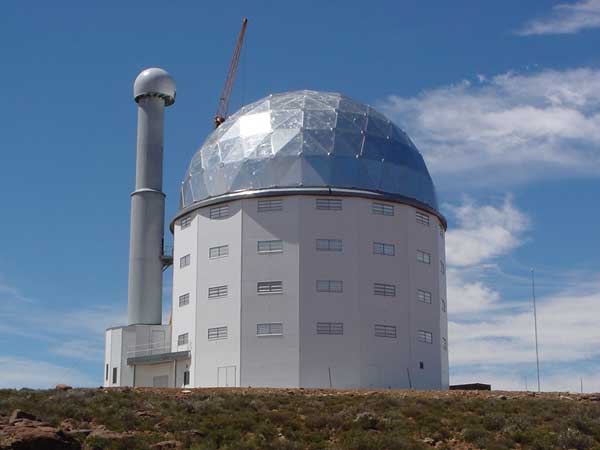
A new inquiry into the management of one of South Africa’s biggest science facilities is to be held by the science and technology committee of the country’s parliament. The inquiry will look into the South African Large Telescope (SALT), although there is confusion over the specific allegations and who has levelled them.
This year has been a turbulent time for the South African Astronomical Observatory (SAAO), which operates SALT. In March, the director of the SAAO, Phil Charles, was reinstated to his post after having been cleared of allegations by the National Research Foundation (NRF) of leaking confidential information on telescope and management proposals.
However, on 25 June the chair of the science and technology committee, Nqaba Ngcobo of the African National Congress (ANC) party, told national radio that the committee would begin an inquiry into “possible mismanagement of funds and conflict of interest” within SALT management. He said the inquiry was prompted by a report from the NRF and calls from shadow science minister Marian Shinn of the Democratic Alliance (DA) party.
Yet a spokesperson for the NRF has said it is unaware of any report, while Shinn has said she only ever wanted an investigation into the NRF’s motives behind Charles’s suspension – a decision she claims damaged South Africa’s standing in the scientific community.
“I can only assume that [the inquiry] is an attempt by individuals within the NRF executive management and their ANC proxies in the committee to continue their vendetta against Charles,” wrote Shinn after the radio announcement.
In an interview with Physics World, Ngcobo now claims he had indeed acted on the calls from Shinn, by requesting a report from NRF leadership about Charles’s suspension. Ngcobo says it was on seeing this report that he decided parliament ought to do a full inquiry – one that also tackled potential issues at SALT. “It seems that there are many people who are affected and as parliament we are not going to only investigate what [Shinn] wants, we are going to investigate everything,” he adds. “We are going to call everyone who is affected by this report to tell us what he knows or what she knows.”
Yet Ngcobo refuses to say what specific allegations the NRF report contains. “If you come [to the inquiry], you will know what reports I am referring to,” Ngcobo says, adding: “I’m not going to go into details because some parts of the report are confidential.”
Ngcobo’s words will do little to put the minds of SAAO members at ease. The general allegations of SALT mismanagement are completely different to those previously levelled – and rescinded – at Charles, which raises the question of why they were not investigated before. According to SALT’s financial director, the telescope has received clean audits since its inception.
To complicate matters further, the chair of the NRF board has today published a separate report looking at the circumstances surrounding Charles’s suspension. It refers to none of the new allegations, but – in a move that is bound to win approval from senior astronomers – recommends a revised framework of management for South African astronomy by way of a national Astronomy Advisory Board, chaired by “an independent researcher of stature”. Senior astronomers had feared such a board would be chaired by a non-scientist, such as an NRF employee.
Charles declines to comment on the inquiry, but welcomes the NRF board recommendations as “a very positive step forward” for South Africa’s astronomy governance. “It is particularly gratifying that this comes at the same time as the SAAO has been selected as the site of the International Astronomical Union’s global office for astronomy development, and major repairs and refurbishment to SALT are coming to a successful conclusion,” Charles tells Physics World.
Ngcobo expects to set the inquiry into SALT management in motion at the beginning of next week.



